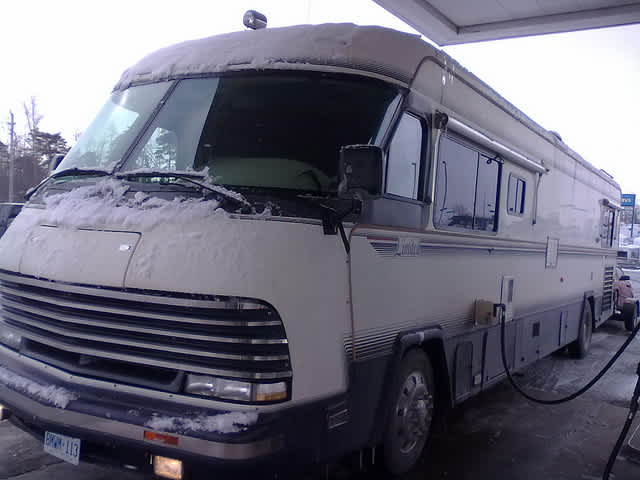Prepare Your Motorhome for Spring Travel
OutdoorHub Contributors 03.25.13

As the icy fingers of winter loosen their grip on North America, those living in the frostier regions begin to anticipate the warmer days of spring just ahead. The improving weather invites RVers to hit the road, but a motorhome that’s been winterized and buttoned up for several months needs to be prepped before it’s ready to roll.
To provide motorhome owners with guidance through this pretravel checkup, Family Motor Coach Association (FMCA), an international organization for motorhome enthusiasts, has several tools to help.
One is the “Spring Cleaning and Travel Preparation” checklist, available online at FMCA.com, which presents important reminders and items to check before departure. Another is the comprehensive advice provided by technical contributors and editors, including noted RV expert Gary Bunzer.
Gary, known in RV circles as the “RV Doctor,” writes a monthly question-and-answer column, “House Calls,” in the association’s magazine, Family Motor Coaching, along with frequent articles on various technical topics related to motorhome operation and maintenance.
Gary’s articles are available to FMCA members online at FMCmagazine.com, and his “Motorhome House Calls” videos appear on FMCA.com.
While Gary says a full and thorough dewinterization of the motorhome is preferred, he notes that some people might not have the time–or patience–to get it all done before the desire to travel prevails. So, he has compiled a list of several service suggestions that motorhomer owners should accomplish before heading out this spring.
House and chassis batteries
Topping the “must do” list is to charge the house and chassis batteries. Before they can be charged, however, they must be reinstalled if they were removed when the motorhome was winterized.
Check the electrolyte level in flooded batteries, and make sure all connections are clean and tight. Charge the batteries and confirm that all 12-volt-DC devices are ready by operating each one.
Propane system
A second item, which may require a service appointment but is vitally important, is to have the propane system and regulator tested by a certified RV service technician. Aside from the fact that this system is required to operate many of the motorhome’s appliances, a leaking or malfunctioning propane system is a safety hazard that must be discovered and repaired prior to operation.
Freshwater system
Third, prepare the fresh water system. For those who winterized the motorhome in the fall using the wet method (adding RV antifreeze to the system), drain and flush the antifreeze from the system and rotate the water heater’s bypass valve to return this appliance to the system.
Next, chlorinate the entire fresh water system using 1/4-cup of liquid household bleach mixed in a gallon of water for every 15 gallons of tank capacity. Pour the chlorine-water solution into the fresh water tank; pump it through all the water lines and fixtures; let it sit for four hours; drain it; and flush until satisfied with the odor and taste.
Tire inspection
Finally, Gary advises that all tires should be cleaned, inspected for damage, and inflated to the correct tire pressures determined by the weight each tire is supporting. This requires that the motorhome be weighed at each tire position using a certified scale.
Each tire should then be inflated to the correct pressures using the tire manufacturer’s weight chart. Traveling on tires that are not inflated to the proper pressures will promote premature tire wear and, more importantly, will affect the handling of the vehicle and could lead to a tire blowout.

